
When introducing the concept of measurement to children, we always start with non standard measurement.
At the ages of 4-6, children understand the concept of short, long, taller, etc but they usually have no understanding of centimeters and inches, making those standard units of measurements too abstract for them.
So in preschool and kindergarten we introduce units of measurement that kids can really wrap their minds around. Usually those are regular household objects and toys.
Measuring is a practical skill that kids use when pouring water, comparing who had more cookies, determining who is taller, etc. In this activity kids delve in deeper to understand measurement of length and height with non standard units!
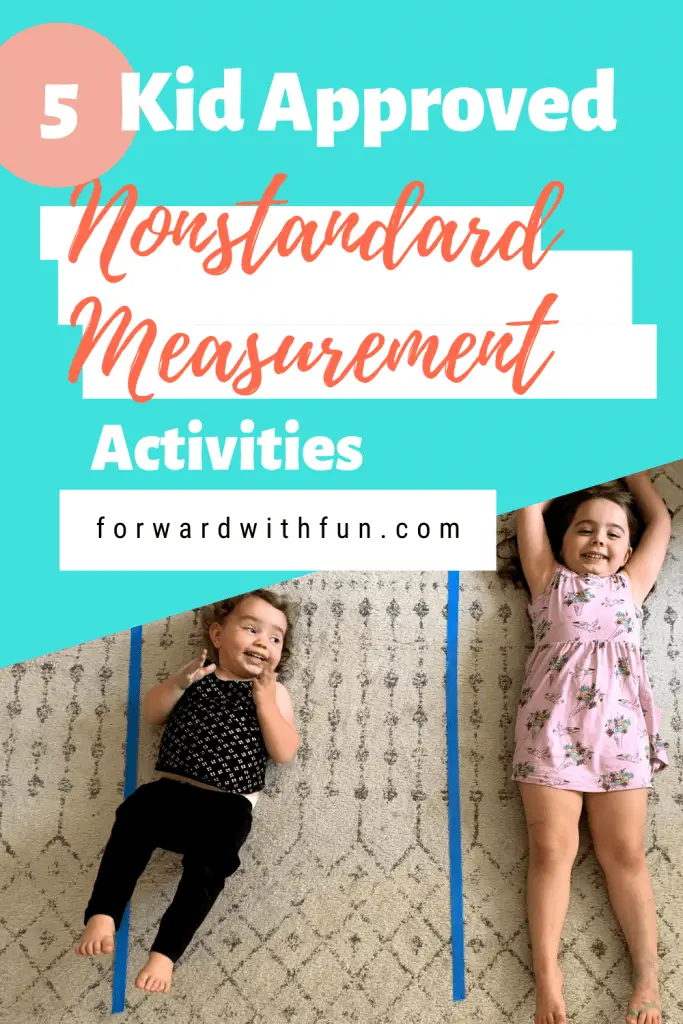
Though measuring length is usually the first thing that comes to mind when we think of measurement, there are actually multiple types of things we measure. Here are some of the standard units we use for these measurements:
Adults are used to pulling out a ruler, measuring cup, or using a scale to measure things. Usually we can visualize something close to a foot or a cup, if we needed to estimate. But children do not have that awareness yet, so instead teach them to measure with non-standard measurement unit.
These non-standard units can be anything but are best when the child selects them and are of high interest: shoes, lego pieces, stickers, race cars, etc. The one thing that they MUST be is uniform in size.
A child cannot measure their height in legos and markers! Instead one unit needs to be used at a time and lined up end to end, just as we would do when measuring with a ruler.
In the United States, the common core standards introduce standard measurement in second grade.
Before then, kids are expected to understand the concepts of measuring objects without using standard measurement tools, like in this first grade standard:
CCSS.MATH.CONTENT.1.MD.A.2
Express the length of an object as a whole number of length units, by laying multiple copies of a shorter object (the length unit) end to end.
In each of these activities, kids use objects instead of rulers to measure length. There are a few rules for measuring precisely that kids should follow when lining up their nonstandard units:
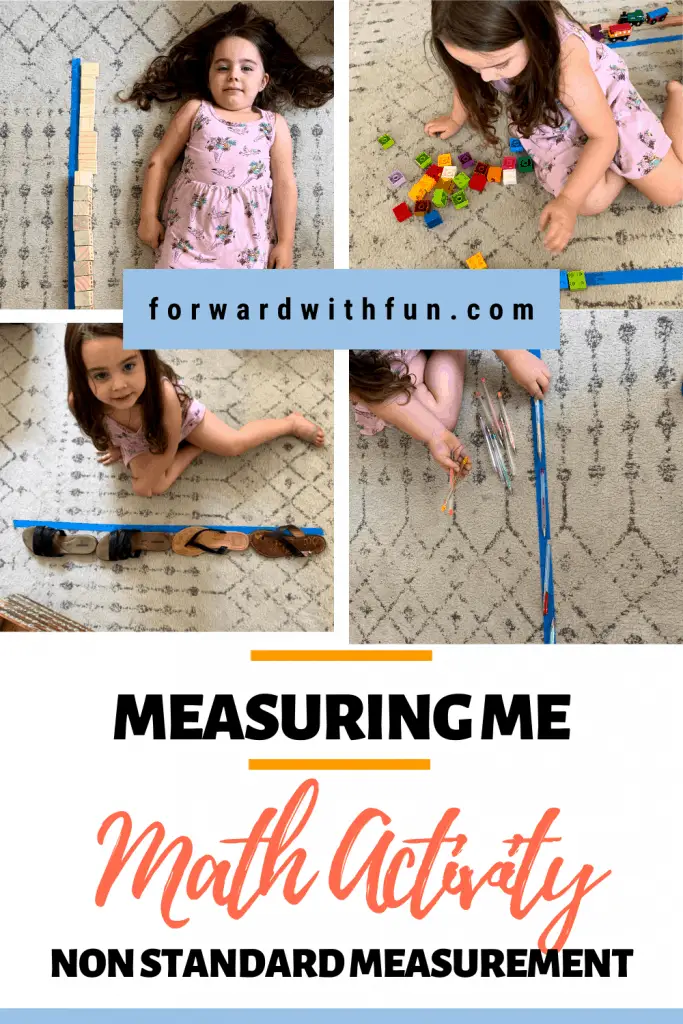
To play "Measuring Me," you'll need blue tape and access to items around the home that are (mostly) uniform in length. Some ideas are shoes, blocks, markers, crayons, envelopes, etc.
While you have the blue tape out, check out TAPE SHAPES!
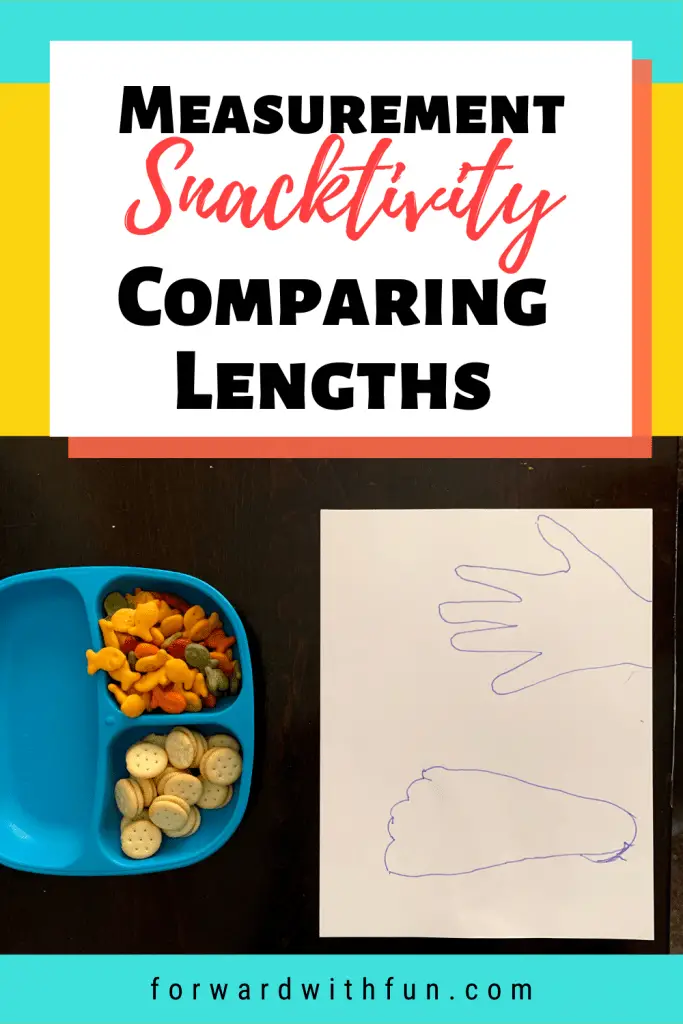
The non standard measurement unit for this activity is my favorite... snacks!
You can choose anything that is uniform in size, and I recommend items that are easy to line up end to end like pretzel sticks. Of course, a classic and fun snack to use is goldfish.
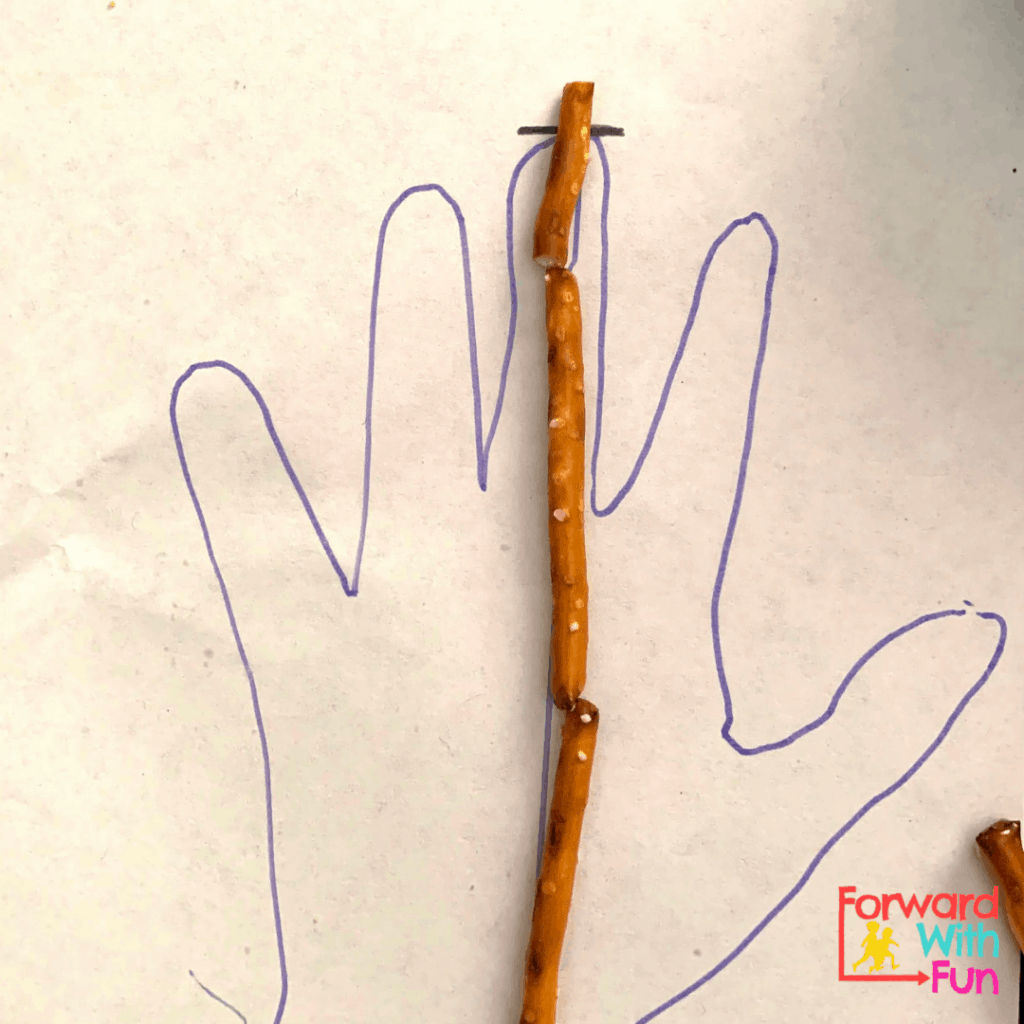
There may be opportunities to talk about halves or beginnings of fractions in case snacks don't line up exactly. You could also round up or round down...
Want another fun math snacktivity? You'll love PUNCH MATH!
This is one of my favorite math centers for the winter. Kids love to see the family of snowmen and compare their heights from shortest to tallest before measuring them in unifix cubes.
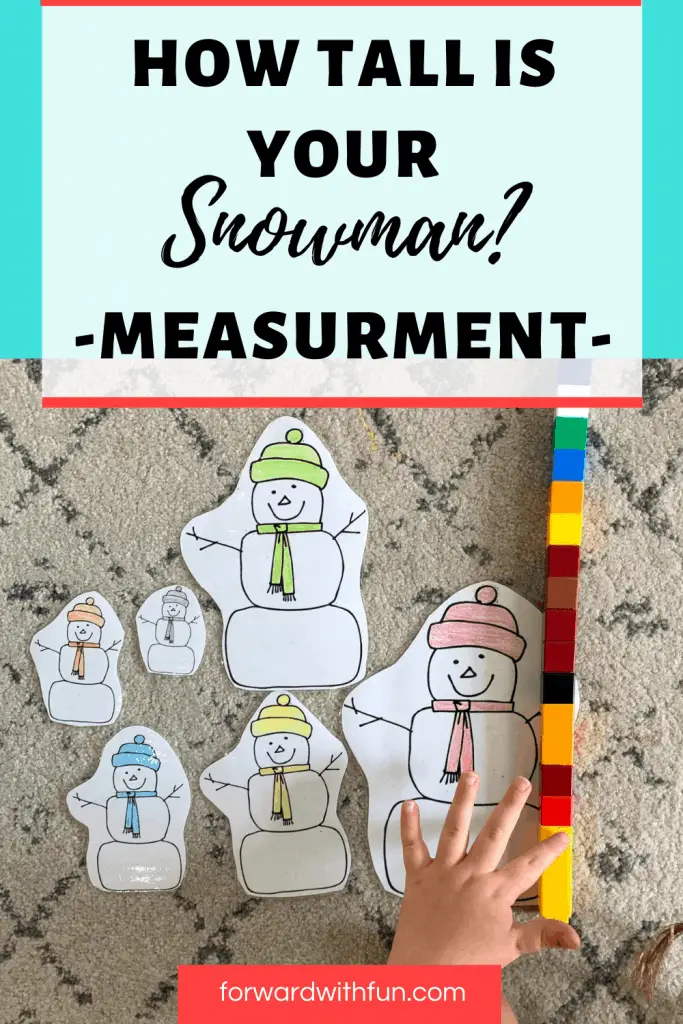
Student in this teacher's classroom measured and compared the lengths of different vegetables during a farming unit. Their teacher made them non standard bean rulers to practice measurement in a developmentally appropriate and fun fashion!
I love this simple yet genius measurement activity. Draw one straight line on a piece of paper and one crooked, anyway you choose. Have kids guess which is longer and then use paper clips to measure which one is longer.
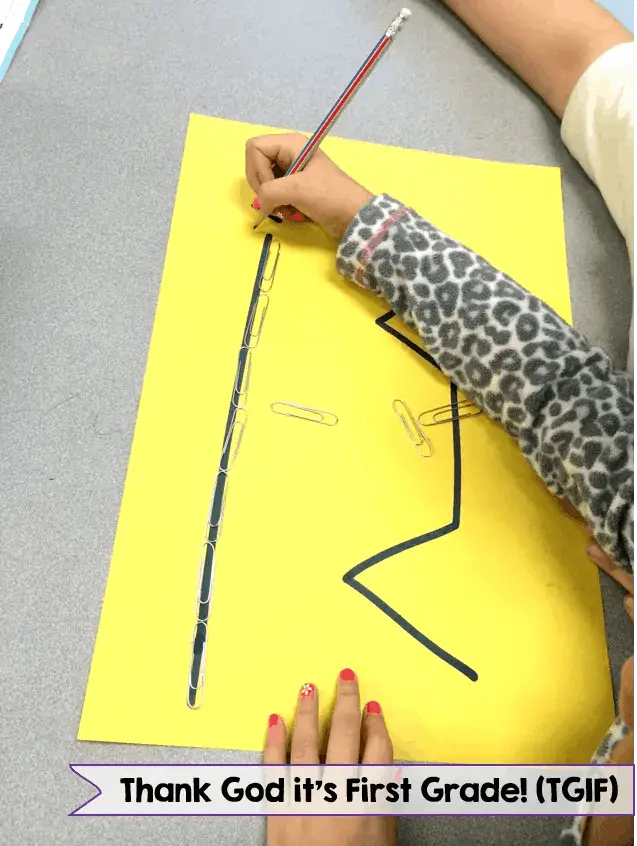
Want a free week of hands-on learning activities that will wow your child? I'll send it right to you!
